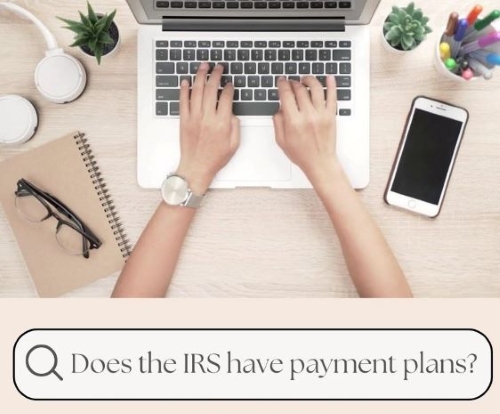
Does the IRS have Payment Plans?
When it comes to paying taxes owed to the IRS, many people find themselves in a difficult financial situation. Fortunately, the IRS offers payment plans that can help taxpayers make their payments in a more manageable way. In this article, we’ll take a closer look at IRS payment plans, how they work, and the different options available.
What is an IRS payment plan?
An IRS payment plan is designed to help taxpayers who cannot pay their tax debt in full immediately and want to avoid collection actions, such as wage garnishment or property liens.
How do IRS payment plans work?
One of the most common types of IRS payment plan is an Installment Agreement. An Installment Agreement allows taxpayers to pay their taxes over time, up to a maximum of 72 months. To qualify for an Installment Agreement, the taxpayer must meet certain criteria set by the IRS and be in good standing with all filing and payment requirements. Additionally, taxpayers may have to submit financial information as part of their application. If approved, the taxpayer can make payments on their tax debts with the IRS directly.
There are different types of installment payment plans available depending on the amount owed and the taxpayer’s ability to pay. If individuals meet the following criteria, they are eligible to apply online for the following plans:
- Short-term payment plan: This is for taxpayers who owe $100,000 or less in combined tax, penalties, and interest. Additional time of up to 180 days to pay the balance in full.
- Long-term payment plan: This is for taxpayers who owe $50,000 or less in combined tax, penalties, and interest. Pay in monthly payments up to 72 months.
Another type of IRS payment plan is an Offer in Compromise (OIC). An OIC allows taxpayers to settle their taxes for less than the full amount owed. To qualify for an OIC, the taxpayer must demonstrate that either they cannot pay the full amount or that doing so would cause them financial hardship. To be approved, taxpayers must provide detailed financial information and submit their OIC with the proper form and fee. If approved, the taxpayer can pay off their tax debts in one lump sum payment or multiple payments over time.
Also, taxpayers who are unable to make any payment on their taxes may be able to receive a Currently Not Collectible (CNC) status. A CNC status temporarily stops the IRS from collecting taxes owed, giving taxpayers a reprieve while they figure out their financial situation. To receive this status, taxpayers must prove that they are unable to pay any of their tax debt due to financial hardship and submit all applicable forms and documents. If approved, the taxpayer will not have to make payments on their tax debt until their financial situation improves.
What are the benefits of an IRS payment plan?
One of the biggest benefits of an IRS payment plan is that it can help taxpayers avoid collection actions such as wage garnishment or property liens. It also allows taxpayers to avoid additional penalties and interest on their tax debt. Though interest and late-payment penalties continue to be charged on any unpaid taxes after April 18, the penalty rate is cut in half while an installment agreement is in effect.
In Summary
No matter which payment plan you choose, understanding your options and making sure that all applicable requirements are met can help ensure a successful outcome in settling your taxes with the IRS. Hoffman & Associates is here to help you understand the process, navigate any issues that may arise, and make sure all necessary documents are properly submitted. With our help, you can successfully resolve your tax debt and get back in good standing with the IRS.
Author
Recent Posts
How Urgent is 2025 Exemption Gifting?
Paying Your Taxes Safely: Leveraging IRS Direct Pay to Mitigate Fraud Risks
Did you Contribute to a Syndicated Conservation Easement?
All Categories
Get a Free Consultation
Call us today to discuss your issue.



